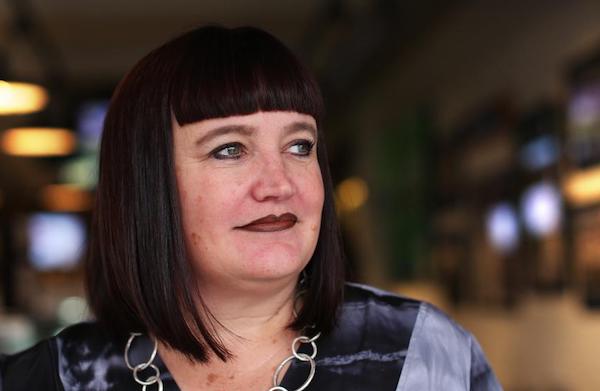Women represent just 22% of board chairs and 13% of CEOs across more than 60 Australian sporting organisations. Why is there such an imbalance? It may be because, in some sporting organisations, women do not get a fair go in progressing their careers in administration.
My (Michelle) doctoral research involved in-depth interviews (conducted over 2012-2014, with follow up in 2015) about career experiences and gender policies with 48 female and male employees from four Australian national and state sport organisations.
The analysis identified a significant gender gap between:
- women’s experiences of inequity, and
- the implementation of policies designed to facilitate change, including for recruitment and selection, promotion and retention.
While policies championed the values of equality, fairness and merit, there were ambiguities and tensions relating to how managers interpreted what policies should do, and how gender inequity was viewed as a social, organisational or individual responsibility.
How will you cope managing older men?
The study findings highlight how managers’ hiring practices did not necessarily reflect policy intentions. Managers (both genders) genuinely believed they selected “the best person for the job”. They spoke of how old rules – like simply appointing former athletes to management roles – had been thrown “out the window” with a focus on merit.
However, women’s experiences of recruitment revealed some examples of bias.
Some women shared examples showing the recruitment process was not as “transparent” as it appeared to be within sport organisations. Men would be “given roles without interview”. One interviewee said:
It’s a pal or a mate. They do the whole independent thing [i.e. independent selection panels] but nine times out of ten they all know each other.
When women endeavoured to engage with men’s recruitment networks there were often personal and professional consequences. For one woman, damaging rumours circulated that she must have been sleeping with the married male manager who appointed her to the job.
Women discussed being “grilled” about their ability to balance work and family responsibilities, or asked about future family plans. Questions like this are unlawful.
Other women discussed being overlooked for roles because they were younger.
… he [the interviewer] actually asked me how old I was. He asked me how I would go being responsible for employees who were predominately male.
Across the organisations in the study women said “everyone knows how the system works”, with “nepotism” and “jobs for the boys”.
Despite acknowledging these norms, women were often fearful of reporting or challenging practices. Instead, many tried to minimise being subjected to discriminatory practices by concealing their marital status and family responsibilities, removing their wedding rings before interview and using their maiden names on resumes.
One woman dressed to conceal her pregnancy by wearing loose-fitting clothing, and she expressed ongoing concerns regarding her position and future career prospects.
He asked me what I was wearing
The research highlights how humour, informal socialising and informal work culture can differentially shape women’s and men’s workplace experiences.
For instance, women discussed how sexualised joking and banter made them feel uncomfortable:
I would do the teleconference at home. One … [male manager] said ‘what are you wearing’.
Others discussed how male colleagues used humour to mask inappropriate and unacceptable gender messages. Women discussed having to work harder than their male counterparts just to be recognised:
you [women] have to prove yourself, you have to push buttons … you have to poke and prod to get ahead.
In contrast, male managers often showcased the promotion of women to senior roles and discussed working toward a more “gender-balanced workforce” to support their claims that gender inequities in promotion were no longer a concern.
This thinking had the effect of reinforcing gender bias in promotion practices. For example, managers rationalised that the difficulties women experienced developing their careers were due to their “personal” choices. Through these claims, managers distanced themselves from being responsible for perpetuating or addressing inequities. Instead “generational change and time” would magically fix things.
The identified gaps between how managers interpreted policy intentions and women’s experiences of developing their sport management careers illustrate the ongoing challenge of making gender bias and sexism visible in order to do things differently. Policies alone do not create change.
In a very public way, sport organisations such as Cricket Australia and Football Federation Australia have had to address important questions of culture that relate to fundamental values of sport – integrity, inclusion, fair play – on and off the field.
To sustain effective change in Australian sport management we need to further commit to unearthing and challenging subtler forms of exclusion so sport workplaces live up to the values that they purport to uphold.
A new clear ambition
As mentioned above, this research was collected over 2012-2015 and there are now signs things may improve.
Since her appointment in late 2016 as Chief Executive Office of the Australian Sports Commission (Sport Australia), Kate Palmer has called for a greater focus on gender equity in the culture and leadership of Australian sport organisations. She said:
I have a clear ambition around increasing the number of female CEOs in national sporting organisations because we need more women in positions of influence and power.
As the first woman to lead the commission in its 31-year history, Palmer’s appointment to one of the most influential executive roles in Australian sport is an important step toward creating long term change.
Sport Australia has launched its 2019 Women Leaders in Sport Initiative. The partnership between Sport Australia and the Office for Women provides opportunities for women to develop leadership skills and networks, thus ensuring a recognisable talent pool that sport organisations can draw upon.
Other recent change initiatives have shifted the focus from gender equity as an issue for women to solve to engaging male leaders as “champions of change” in sport.
How power shapes careers
While these initiatives contribute to the change strategies that are needed to transform sport organisations, we need more research to better understand how gendered power relations shape women’s sport careers off the field.
More evidence is needed around how gender inequities are perpetuated and challenged, from overt sexism to more subtle forms of exclusion.
While many organisations grapple with these issues, the management of sport is historically grounded in assumptions about the “naturally superior” sporting performance of masculine bodies on and off the field. The growing professionalisation of sport is placing such gender based stereotypes under increasing scrutiny, with accompanying expectations that organisations demonstrate more progressive cultures, practices and policies.


